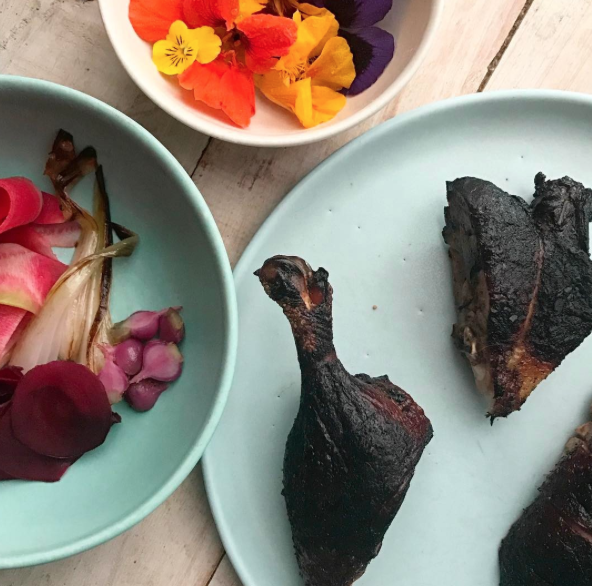Pop culture meets foodies in new ‘Stranger Things’ menu
April 3, 2017
Being eaten by a Demogorgon might sound terrifying, but what about the reverse? Turns out, eating the Upside Down creature may not be so scary.
The monster from the hit Netflix show “Stranger Things” was turned into a Demogorgon Burger by London bar Lucky Chip at The Old Queen’s Head in November 2016 after the show’s hype reached global proportions. The bar’s seven-item “Stranger Things” menu lasted an unexpected eight weeks, according to chef Ben Denner.
“We got emails every day [saying], ‘Please don’t take it down, we are coming for dinner tomorrow,’” Denner said.
TV–impacted menus are a growing global trend that gets customers excited about food through their favorite shows. Netflix Kitchen on YouTube released its own “Stranger Things” recipes, creating a French Onion Barb Soup and a Demogorgon Pie in October 2016.
From July 18–29, Chicagoans will also get to experience a “Stranger Things” menu at Elizabeth, the Michelin one-star restaurant at 4835 N. Western Ave.
The restaurant is not new to show-inspired cuisine; Chef and 2005 creative writing alumnus Iliana Regan created a “Game of Thrones” menu in 2015 that is still in circulation. Sous Chef Nathaniel West said combining pop culture with the menu is the restaurant’s way to make its food more accessible and attract people who might not ordinarily dine at the Ravenswood restaurant.
“If you have something people are already familiar with, that’s really important to help connect the dots,” said West.
Like Denner and his staff—and most of the TV-loving world—West said the Elizabeth staff loved “Stranger Things” and could not stop talking about it.
West said the menu is not yet final, but Chef Regan will create a chocolate pudding, a take on the popular ‘80s burger and something with Eggo waffles, true to character Eleven’s love for waffles.
Lucky Chip’s menu consisted of similar items in “Stranger Things,” like the Stranger Danger Fries, Eggos Waffle Burger—waffles, aged beef patty, American cheese, peanut butter and jelly with a hint of chili. Denner said the Demogorgon Burger—beef patty filled with darkly spotted gorgonzola, cheddar, candied bacon, pickled onions and a thousand island sauce—was the most popular and best burger the bar has made.
“Even if [customers] haven’t seen [the show], they always ask questions on what it’s all about [and say], ‘Mum, can I watch it when I get home?’” he said.
Denner said he is happy to hear that a “Stranger Things” menu is taking off in Chicago; When he created his, there was nothing like it.
Interpreting food from popular culture is a phenomenon that allows viewers to look at cooking through new, interactive methods. New Yorker Andrew Rea, whose cooking show “Binging with Babish” has 12 million likes on Facebook and was recently featured on Buzzfeed News, creates recipes from famous movies and TV shows. Since he started his cooking show a year ago, he has made more than 25 videos with dishes from movies such as “Chef,” “Pulp Fiction” and “Ratatouille.”
The one-man show is Rea’s biggest hobby, one that usually keeps him up until 4 a.m. to finish cooking and producing episodes. His full-time job in film gives his video the professional touch.
He said it has started to grow in the last couple of months in a way that he would never have expected. Seeing the internet eat up his videos has helped bring his cooking to the forefront and proclaiming the “foodie” title, Rea said.
“The hottest thing to be is a foodie right now,” Rea said. “Any Tinder profile in America will tell you that.”
This show has changed Rea’s life for the better and connected people through the love of food and popular culture. He said people have said that it helped them get into cooking.
“That is the best part about making the show,” he said. “From my little corner of this phenomenon, there’s a definite connection between those two things.”
West, who calls the Elizabeth staff a weird bunch, said it is gratifying to see other people come in and appreciate the weirdness the staff shares about TV shows and shared interest from an outsider’s perspective.
“It is less intimidating and more accessible for people coming in that aren’t familiar with our food,” West said.








